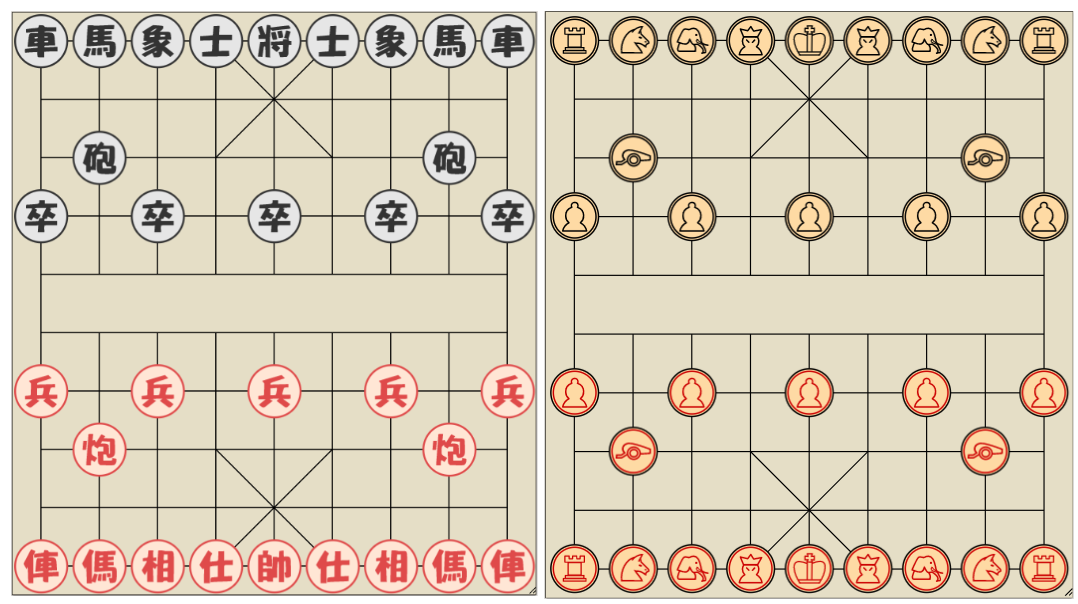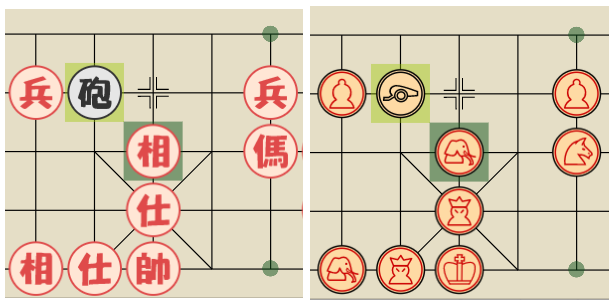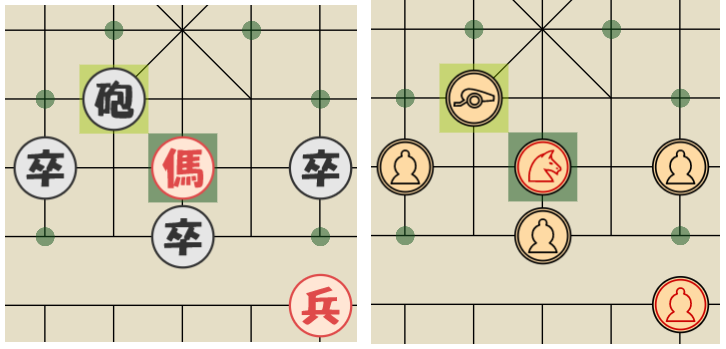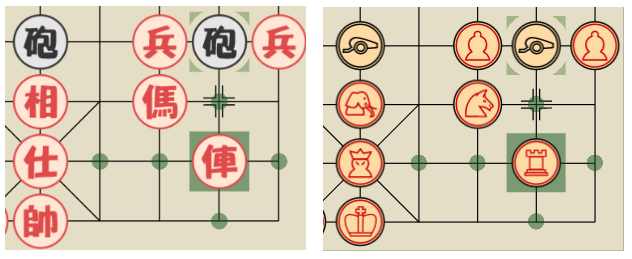Xiangqi
Xiangqi (Chinese Chess)
Rules
The rules of Xiangqi are like chess with some distinct difference explained below. The pieces in Xiangqi are centered on the intersections of the rows and columns essentially making the board dimensions 9 x 10. Players take it in turns moving pieces on the board to checkmate the enemy king.
The board is notably different to chess. There are two halves, separated by the “river” which affect moment of the elephant and pawn. There is also a palace on each side (a 3 x 3 grid) confining the king and its advisors. The only pieces that can promote are the pawns (when crossing the river), improving their movement, which will be explained below.
Pieces
King (K)
The King (also known as the general), can only move within its palace and one step orthogonally (up/down, left/right) not diagonally.
Additionally, the kings are not allowed to face each other with no piece in between. This is useful to setup checkmates in the endgame.
Advisor (A)
The Advisor (or guard) can only move within its palace and one step diagonally
Elephant (E)
The elephant can only move diagonally exactly spaces, it can be blocked (it can't jump over pieces) and it cannot cross the river.
Horse (H)
The horse can move like a chess Knight except that it must move one square orthogonally first, before then moving diagonally forward in the same direction. This means that the Horse can be blocked if there are pieces adjacent to it.
Cannon (C)
The cannon moves the same as a chariot except it captures but jumping over exactly one piece, friend or foe.
Chariot (R)
The chariot moves the same as a chess rook, any number of squares orthogonally. This is the most valuable piece in the game.
Pawn (P)
The pawn (also known as soldier) moves and captures one square forward. Once it passes the river it is automatically promoted ( keeping the same image), but can now also move and capture one square left or right. The pawn is the only piece that can be promoted.
Additional Rules
- A stale mate is considered a loss for the player that cannot move.
- Perpetual checks are a loss for the player giving a check after four repetitions. These are warned about to the aggressor in the move before they are triggered.
- The chasing rules are not yet implemented in the engine used (Fairy-Stockfish), once this is supported (github issue) we will incorporate this rule(s) for Xiangqi.
- A draw can be claimed by either player on the fourth repetition of a position.
Notation
There are several notations used for Xiangqi, we currently use WXF notation on this site, which consists of 4 characters:
[single-letter piece abbrev.][former file][operator, including movement direction][new file, or in the case of purely vertical movement, number of ranks]
Files are numbered 1 to 9, from right to left from each player’s viewpoint. Therefore, your rook in file 1 faces the opponent’s rook in file 9.
Pieces moving forward are given “+” whereas moving backwards gives “-“, movement is relative to the active player. If a piece moves diagonally their new file destination is given rather than number of ranks increased or decreased. Moving sideways gives “=” followed by the file destination.
In order to avoid any ambiguity, if two of the same pieces are in the same file then “+” or “-“specifies if it’s the more advanced piece or less advanced respectively. Finally, if there are 3 or more pawns on the same file, then they are numbered 1 upwards (with 1 being the closest to you) and are referred to by their number instead of their piece type “P”, e.g. “36+1” would be the third pawn on file 6 advances one square forward.







